In recent years, statistics show that the presence of women on the Camino de Santiago is slightly higher than that of men. In this article, you’ll discover fascinating stories of women who have walked the jacobean routes before you. Many women have concerns and questions about doing the Camino de Santiago. Can I do the Camino de Santiago alone? Will I be safe on the Camino? Are there purple points along the route? Keep reading to find all the answers!

The Camino de Santiago is a safe experience that generates a true sense of empowerment and freedom
Will I feel safe on the Camino?
One of the most common concerns for those who walk the Camino de Santiago is safety, especially for first-time pilgrims, both men and women. Fortunately, everyone affirms that the Camino de Santiago is a safe and welcoming place, even for solo travelers.
However, as with any trip, it’s important to take basic precautions to enhance your sense of security:
- Walk in a group or with companions, especially on less traveled sections. Most women feel safer when they are part of an organized group.
- Inform a loved one of your itinerary and maintain regular contact. Always carry a charged mobile phone for emergencies.
- Use apps like AlertCops, which provide support in any type of emergency.
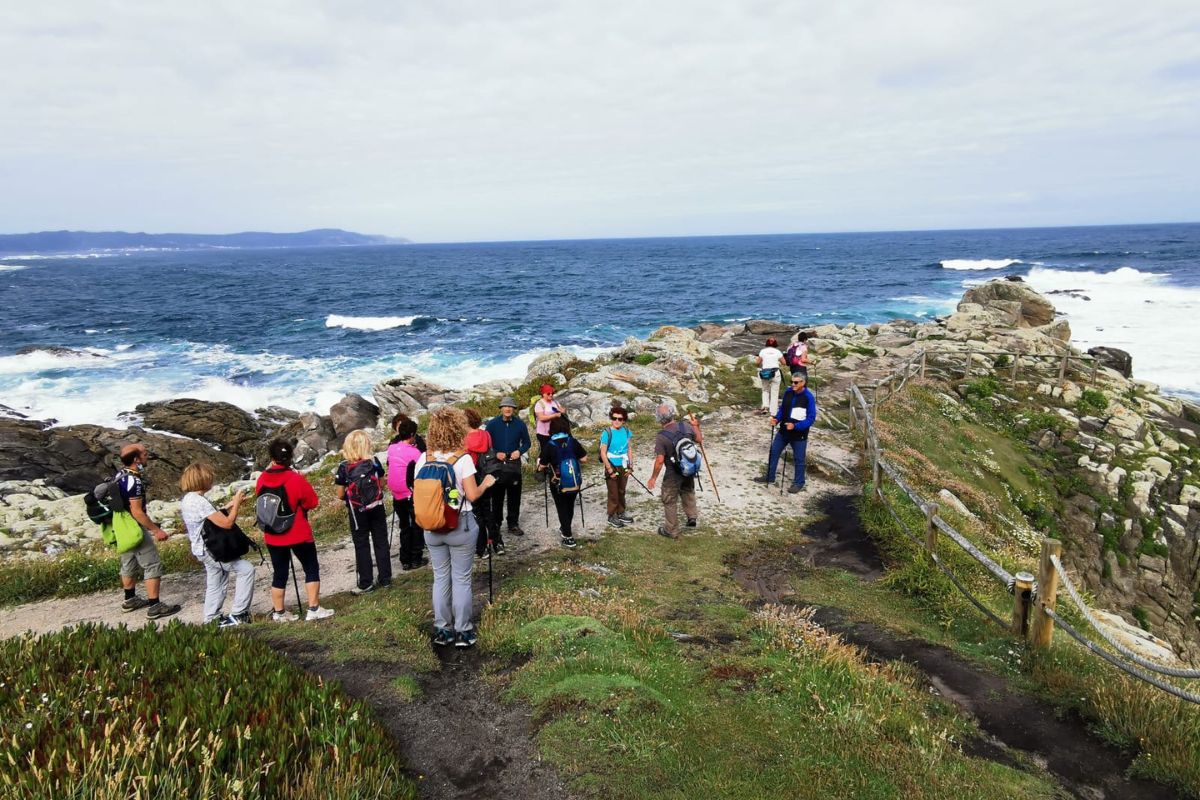
A safe option to do the Camino de Santiago is in an organized group
Women’s experiences on the Camino are very positive. They find solidarity and support among fellow pilgrims and locals, as the community and spirit of the Camino are strong and always ready to help.
Are there purple points along the Camino?
Yes, along the Camino de Santiago, especially on the busier sections, you will find purple points. These are safe spaces for women who may need help or feel unsafe. Purple points are managed by volunteers and organizations dedicated to the protection and support of women pilgrims.
These points offer information, assistance, and a safe place to rest. They are located in hostels, information centers, and other strategic places along the route. Some municipalities on the Camino de Santiago, like Cacabelos on the French Way, have them available for both locals and pilgrims.
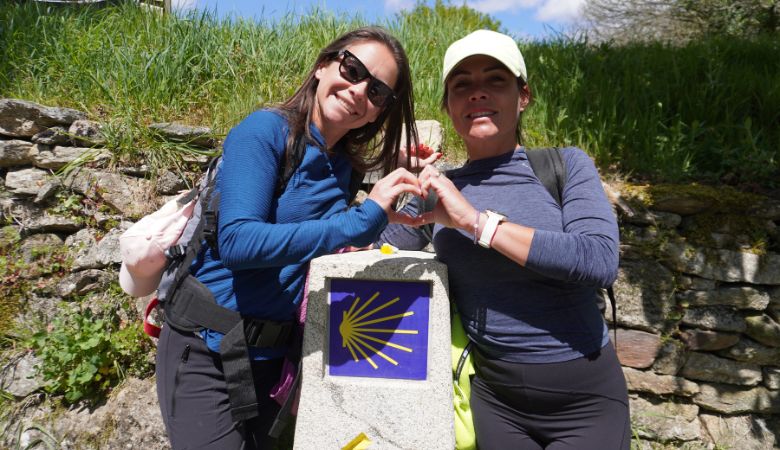
On the Camino, you can be at ease; there will be other female pilgrims like you
Examples of Women Pilgrims on the Camino de Santiago
Historically, men have dominated the Camino, perhaps due to the patriarchal nature of society in past centuries. Women who undertook the Camino de Santiago were usually queens, nobles, or religious figures, and today we have historical records of female pilgrimages. Fortunately, in recent decades, the presence of women on the Camino has become the norm. Here are some examples of famous female pilgrims from history and modern times.
Jimena Garcés
Jimena, wife of Alfonso III the Great, made two pilgrimages to Compostela in the 9th century. Jimena is considered the first documented female pilgrim, although her travels were part of her duties as an Asturian queen. Nonetheless, ancient documents mention that Jimena pilgrimed to Santiago per causa devotione. The Cronicón Iriense documents that both the king and queen offered numerous gifts and donations to the church of Santiago.
Gildeberta of Flanders
The Codex Calixtinus, attributed to Aymeric Picaud, includes a valuable guide for the Pilgrim to Santiago in its fifth book. There are records of a woman, Gildeberta (or Girberga) of Flanders, who accompanied Picaud on his pilgrimage from Rome.
Mentioned as a companion and sotia or collegue at the end of the book, it is possible she was a co-author during their journey around the 12th century. The possible collaboration of Girberga highlights the presence of women on the Camino when it was very dangerous for them to pilgrimage to Santiago. Today, a film about the Camino, “La Sinapsis del Códice” (Pablo Iglesias, 2010), recalls the story of this pilgrim.
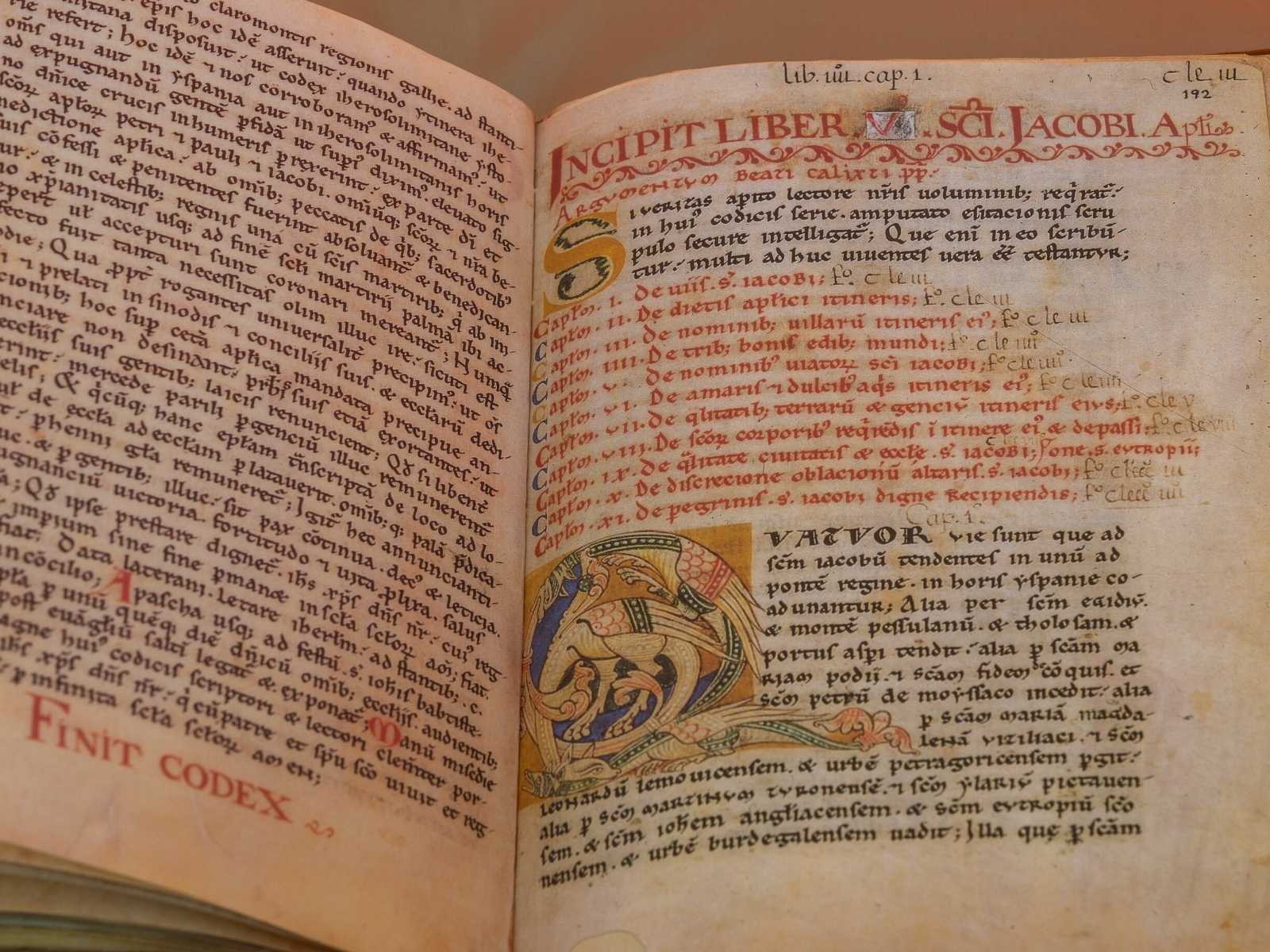
The Codex Calixtinus, the first guide to the Camino de Santiago, could have been co-written by a woman
Bona of Pisa
Bona of Pisa made nine pilgrimages to Santiago de Compostela. Born in Tuscany in the 12th century, she became a nun at 10 years old. At 14, she pilgrimed to the Holy Land following her father in the Crusades, although she was captured and enslaved by Muslims. Five years later, she was freed and heard about Santiago de Compostela, where she pilgrimed repeatedly before dying in Pisa at the beginning of the 13th century.
Her remains rest in the church of San Martino in her hometown, where she is venerated as a patron and celebrated every May 29. Considered the patron of pilgrims and tourism professionals, she was canonized for her dedication and effort in helping other pilgrims.
Saint Bridget of Sweden
Saint Bridget of Sweden was a noble and mystic who pilgrimed to Santiago in the 14th century, becoming one of the most famous pilgrims in history. Very popular in Sweden, her deep religiosity and an ancient family tradition led her to Compostela.
Since the time of her paternal great-great-grandfather, her family had the custom of pilgriming to Compostela, as did her father and mother. Bridget, from a noble and wealthy family, made this journey accompanied by her husband, Ulf Gudmarsson, and a large entourage. In fact, historical records highlight that the journey to Compostela caused great expenses and efforts for the family. Later, Bridget pilgrimed to Rome and the Holy Land, among other places.
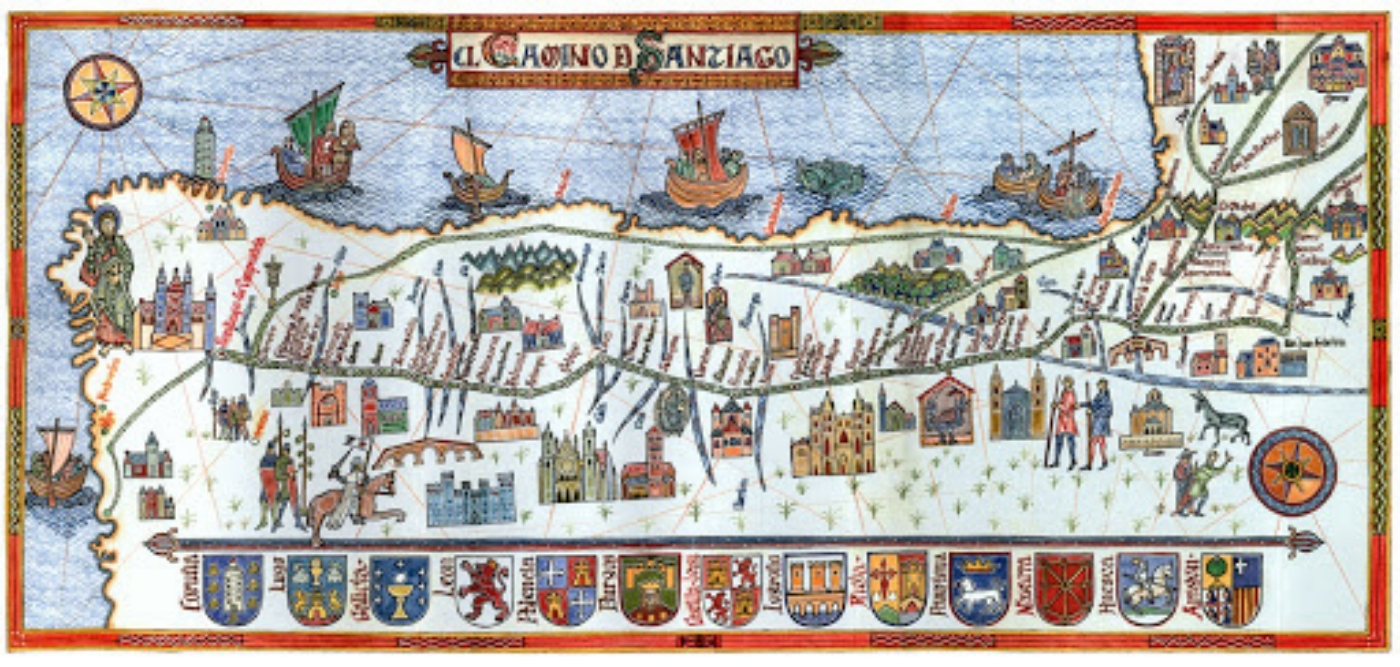
Reaching Santiago was dangerous in the Middle Ages, both for men and women
Shirley Maclaine
In the 20th century, American actress and writer Shirley Maclaine also walked the Camino. In her book “The Camino: A Journey of the Spirit,” she recounts her personal and spiritual experience along the route. The Oscar winner for Best Actress in 1985 for “Terms of Endearment” walked the Camino de Santiago in 1994 on the recommendation of her psychotherapist, who accompanied her throughout the French Way from Roncesvalles.
Jenna Bush
Jenna Welch Bush, one of the daughters of former U.S. President George W. Bush, completed the Camino de Santiago in the Holy Year 2004. Jenna began the Camino after finishing her English Literature studies, accompanied by two friends and a discreet but strong security detail. She started her journey in the Galician town of Samos and enjoyed the landscape and gastronomy of Galicia on her way to Santiago de Compostela.
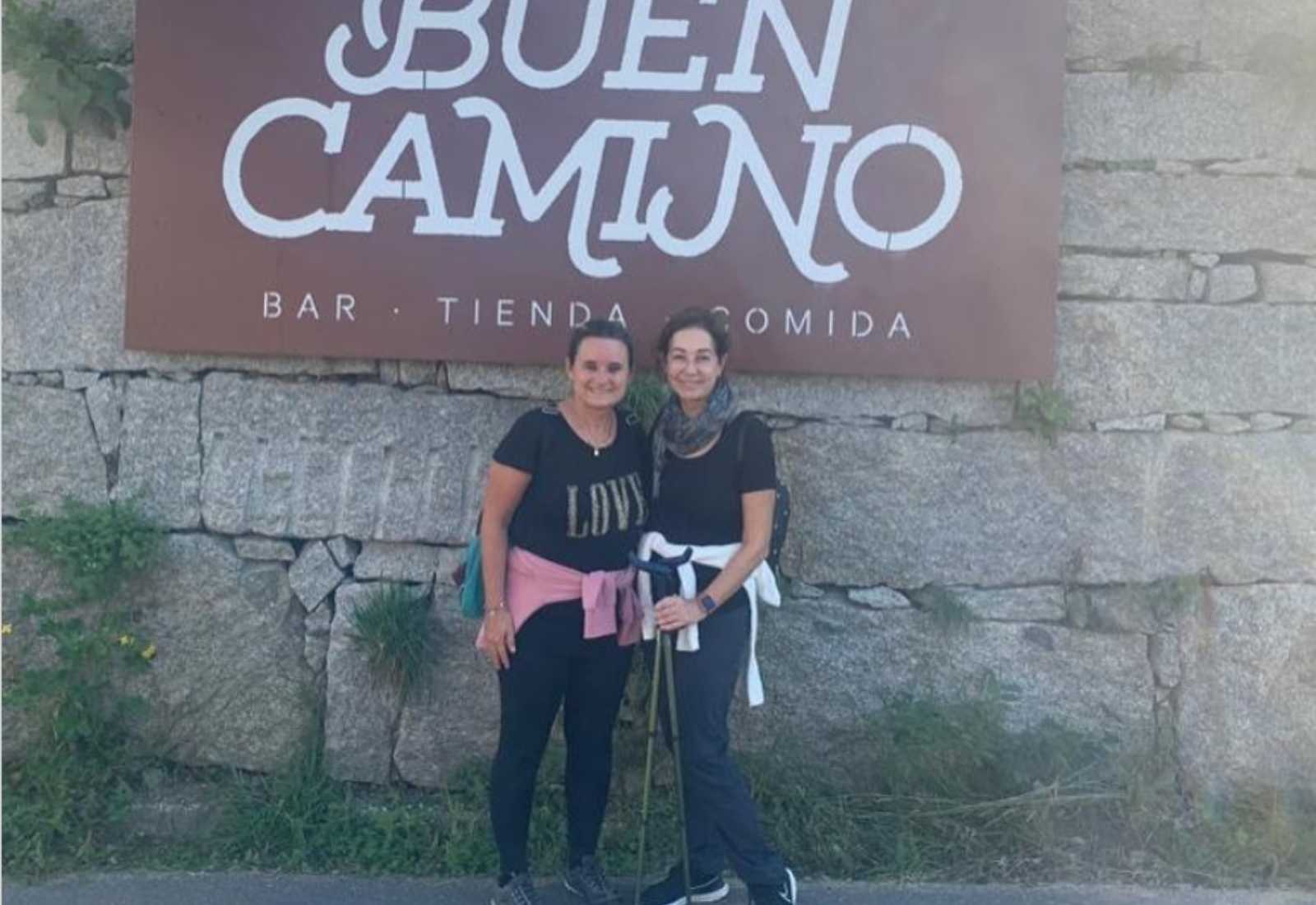
Women pilgrims can enjoy a Buen Camino today
Angela Merkel
In 2014, former German Chancellor Angela Merkel highlighted feeling moved by her experience of walking a section of the Camino de Santiago. It was a very short stretch, just 6 km of the last 100 km of the French Way, but she said it was an experience she would remember for the rest of her life.
Julia Baird
John Lennon’s sister, Julia Baird, walked the English Way as part of an expedition by the Real Orden de Caballeros de María Pita. Her adventure in 2018 aimed to promote this route and support its inclusion in the UNESCO World Heritage list for its historical relevance.
In summary, these stories inspire many women to embark on the Camino de Santiago, a safe and enriching place for women. The pilgrim community guarantees a positive and safe experience for women on the Camino de Santiago.
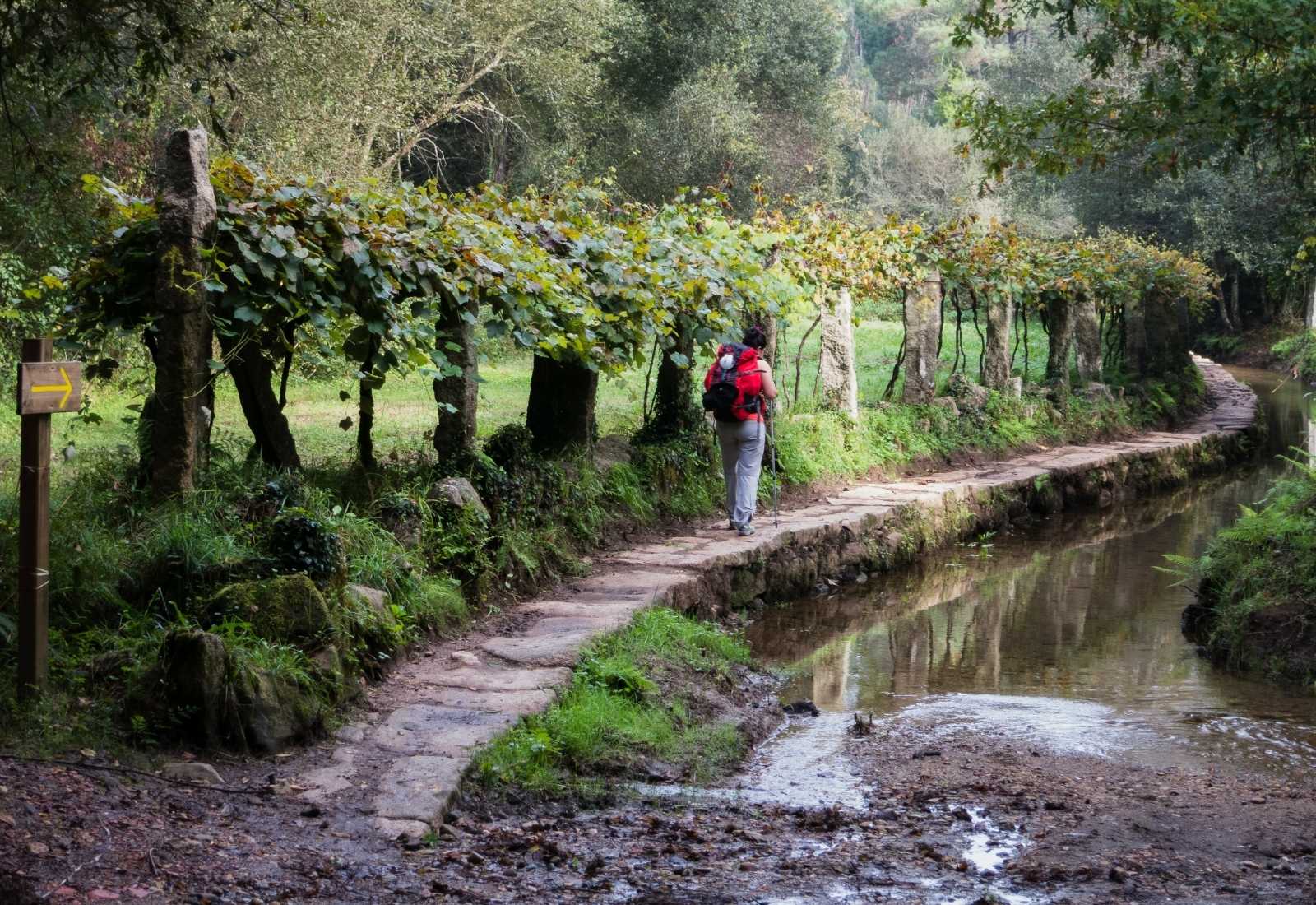
Women on the Camino can walk it with peace of mind
From the Middle Ages to the present, many have found in this Camino an opportunity to grow, reflect, and connect with an ancient tradition. If you feel inspired by the stories of these women, take the plunge and experience your own adventure on the Camino de Santiago. Buen Camino!












Leave A Comment